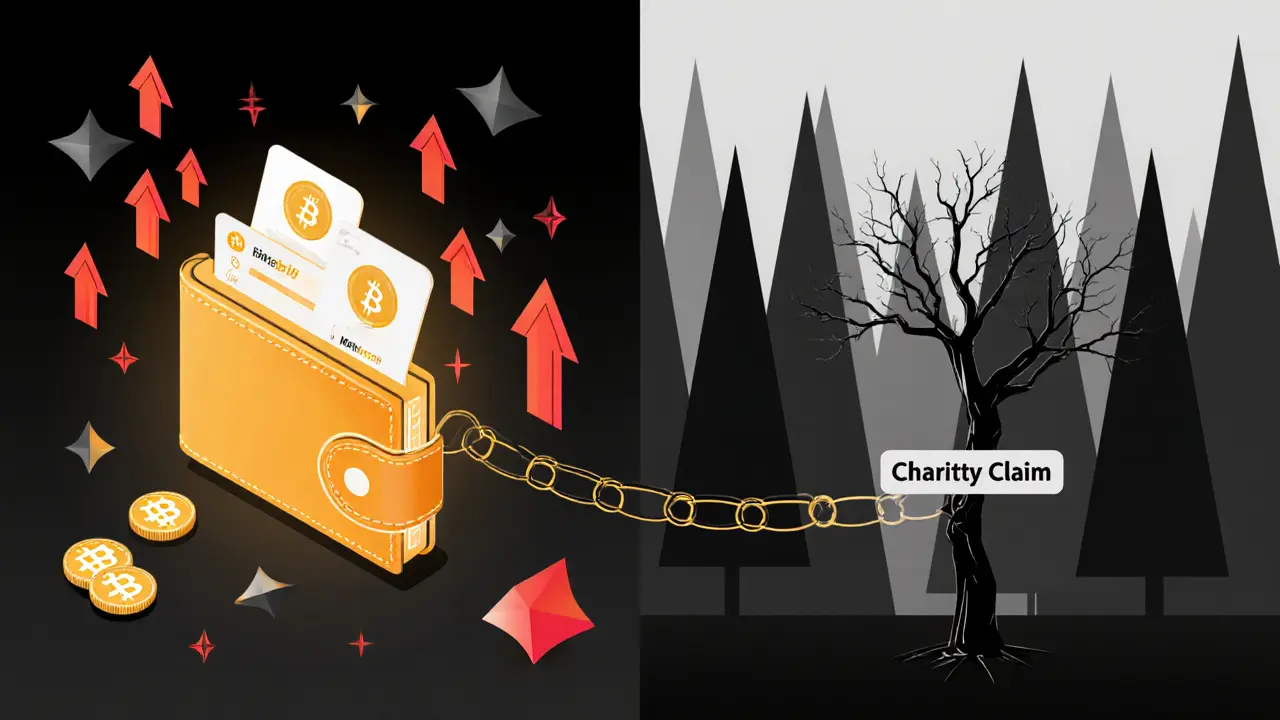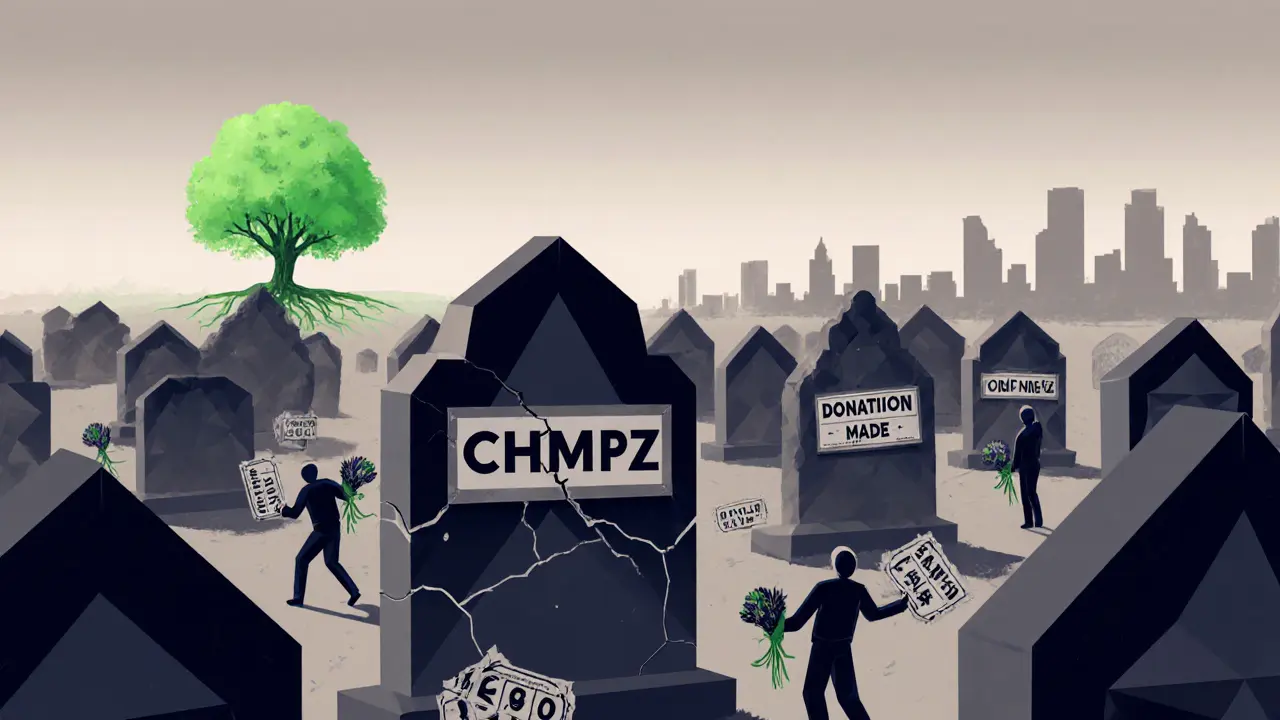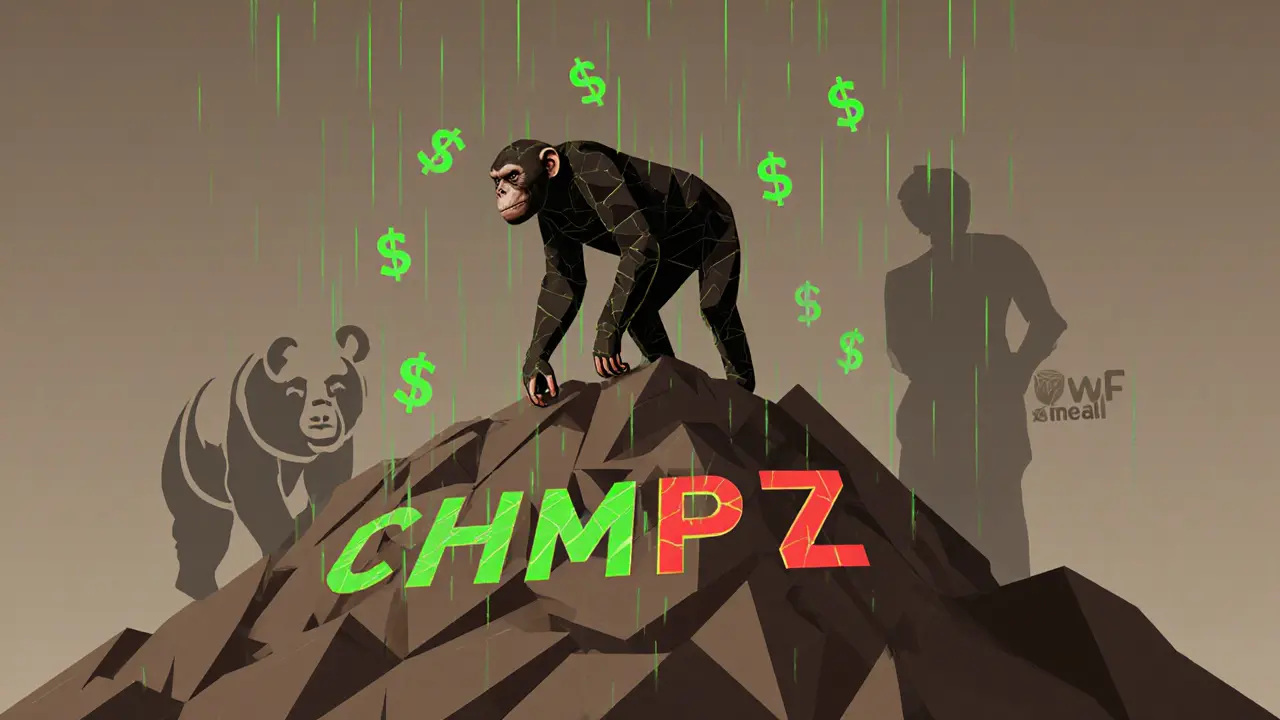CHMPZ Investment Risk Calculator
Assess Your Risk
Calculate potential losses based on your investment and CHMPZ's historical volatility.
Important Warning: CHMPZ is a micro-cap token with over 85% price drop from peak. Trading volume is extremely low ($178K), making it highly illiquid. The project lacks verifiable conservation proof and faces regulatory risk. Only invest what you can afford to lose.
Results
Enter your investment details to see potential outcomes
Chimpzee (CHMPZ) isn’t just another crypto coin. It’s a high-risk, high-reward experiment wrapped in animal conservation slogans and promises of passive income. Launched in March 2024, it claims to be the first Web3 project where you can earn money while saving animals and fighting climate change. Sounds too good to be true? That’s because it mostly is.
How Chimpzee (CHMPZ) Works - On Paper
Chimpzee markets itself around three ways to earn: staking, referral bonuses, and token rewards from its ecosystem. You’re told if you hold CHMPZ, you’re automatically contributing to wildlife charities. The project says it’s tied to real-world conservation efforts - like protecting chimpanzees and reforestation in Africa. But here’s the catch: there’s zero public proof.
No audited reports. No bank statements showing donations. No partnerships with known wildlife NGOs like the Jane Goodall Institute or WWF. Just a website with glossy images of chimps and vague promises. Meanwhile, the token trades on small exchanges like MEXC, BitMart, and LATOKEN. You won’t find it on Binance or Coinbase. That’s not an accident.
The Price Rollercoaster
Chimpzee’s price history reads like a thriller novel. It hit an all-time high of $0.0003253 in March 2024. Today, it’s trading around $0.00004045 - down over 85% from its peak. That’s not a correction. That’s a crash.
But here’s what’s weird: in the last 30 days, it surged 117%. That’s not due to adoption. It’s due to pump-and-dump cycles. A small group of traders buys, hype builds on Telegram and Reddit, retail investors jump in, and then the big holders sell. The 24-hour trading volume? Just $178,000. Compare that to Bitcoin’s $30 billion. CHMPZ is a drop in the ocean.
Technical indicators are mixed. The RSI hovers around 55-60 - neutral to slightly bullish. But the 50-day and 200-day moving averages are both above the current price, which usually means downward pressure. Analysts are calling it a classic micro-cap trap: low liquidity, high volatility, and no real fundamentals.
Who’s Buying It - And Why
Most CHMPZ holders are retail investors chasing quick gains. Etherscan data shows 28,450 wallets hold the token. But 68.7% of them have less than $100 worth. That’s not investment. That’s gambling.
On Reddit, users brag about 100%+ returns in 30 days. But the same users complain they can’t sell without dragging the price down. One user said it took two hours to offload 30% of their position. That’s illiquidity. That’s risk.
Meanwhile, the project’s Discord has 12,450 members - but only about 400 are active at any time. Telegram has 8,700 subscribers but averages just 142 messages a day. That’s not a community. That’s a marketing shell.

The Charity Claim - Where’s the Proof?
This is the biggest red flag. Chimpzee says it donates to animal conservation. But there’s no public ledger. No receipts. No third-party verification. Trustpilot reviews mention the mission is "lovely," but users can’t find any proof donations were ever made.
The SEC launched its "Greenwashing in Crypto" initiative in July 2025. It’s targeting exactly this kind of project: tokens that use environmental claims to attract buyers without backing them up. If Chimpzee can’t prove its conservation impact by early 2026, it could face regulatory action.
Compare that to Solarcoin (SLR) or EcoWatt (ECO). They have transparent donation systems, verified partnerships, and public reporting. Chimpzee has none of that.
Where You Can Buy CHMPZ (And Why It’s Dangerous)
You can only buy CHMPZ on a handful of small exchanges:
- MEXC Global (68% of volume)
- BitMart (20%)
- LATOKEN (12%)
It’s not on Binance, Kraken, or Coinbase. Why? Because those platforms have strict listing rules. They require liquidity, transparency, and security audits. Chimpzee doesn’t meet any of those.
Even on MEXC, the order book is thin. The average depth is just $1,843. That means if you try to sell $1,000 worth, you’ll likely crash the price. And if you’re wrong and need to get out fast? You might not be able to.

Is Chimpzee a Scam?
It’s not a scam in the traditional sense - there’s no fake team, no stolen code, no outright fraud. But it’s a classic speculative bubble dressed as a cause.
It has a real token, a real contract address, and real trading activity. But it lacks:
- Verifiable conservation impact
- Transparent fund allocation
- Active development (only 3 GitHub commits in 90 days)
- Professional documentation
- Any meaningful partnerships
According to a University of Cambridge study from June 2025, only 12% of charity-themed crypto projects survive past 18 months. Chimpzee is already 20 months in. It’s running out of time.
Should You Invest?
If you’re looking for a long-term store of value? No.
If you want to support animal conservation? Don’t buy CHMPZ. Donate directly to a verified charity instead.
If you’re a speculator with money you can afford to lose? Maybe. But treat it like a lottery ticket - not an investment.
Most crypto risk advisors recommend a maximum $50 position in CHMPZ. That’s less than 0.5% of a typical crypto portfolio. If you’re putting in $500 or $5,000, you’re not being smart - you’re being desperate.
What’s Next for Chimpzee?
Analysts predict CHMPZ could drop another 25% by the end of 2025. The most likely scenario? The project fades into obscurity. No major updates. No new partnerships. No transparency. Just another dead token in the graveyard of failed crypto projects.
Unless Chimpzee suddenly releases audited donation reports, partners with a real conservation group, and hires a serious dev team - it won’t survive 2026.
Right now, the only thing growing is the number of people asking: "Where did my money go?"
Is Chimpzee (CHMPZ) a good investment?
No, not as a long-term investment. CHMPZ is a high-risk, micro-cap token with no verifiable fundamentals, weak liquidity, and no proof of its conservation claims. It’s speculative at best and potentially a pump-and-dump scheme. Only consider it if you’re comfortable losing your entire stake.
Can I earn passive income with CHMPZ?
The project claims you can earn through staking and referrals, but these rewards are tied to token price growth - not real income. If the price crashes, your "earnings" vanish. There’s no guaranteed yield, no audit of reward distribution, and no stable mechanism to back up the claims.
Where is CHMPZ traded?
CHMPZ is primarily traded on MEXC Global, with smaller volumes on BitMart and LATOKEN. It is not listed on major exchanges like Binance or Coinbase due to low liquidity and lack of transparency. Trading it requires using a smaller, riskier platform with higher slippage and limited support.
Has Chimpzee donated to any animal charities?
There is no public, audited evidence that Chimpzee has donated any funds to animal conservation efforts. Despite claims on its website and marketing materials, no receipts, bank records, or partnership announcements have been released. Independent watchdogs and users have repeatedly asked for proof - and none has been provided.
Is Chimpzee regulated?
Chimpzee is not regulated by any financial authority. It operates in the unregulated space of micro-cap crypto tokens. However, it may be at risk under the SEC’s "Greenwashing in Crypto" initiative launched in July 2025, which targets projects making false environmental claims. Without proof of donations, Chimpzee could face enforcement action.
How do I buy CHMPZ safely?
Only buy CHMPZ on MEXC, BitMart, or LATOKEN - never from unofficial sources. Always double-check the contract address (0x...9a7c) on Etherscan to avoid scams. Use a non-custodial wallet like MetaMask or Trust Wallet. Never invest more than you can afford to lose. Treat it like a gamble, not a financial decision.
What’s the future outlook for CHMPZ?
Most analysts expect CHMPZ to decline further in 2025-2026. Without transparency, development, or real partnerships, the token has little chance of long-term survival. The 2025 price forecast range is $0.00002995 to $0.00004283 - a 25% potential drop from current levels. The only way it survives is if it suddenly proves its conservation impact - and that hasn’t happened yet.

Leisa Mason
November 18, 2025 AT 19:47Rob Sutherland
November 19, 2025 AT 05:55Tim Lynch
November 20, 2025 AT 21:50Melina Lane
November 22, 2025 AT 02:37andrew casey
November 23, 2025 AT 13:31Lani Manalansan
November 23, 2025 AT 20:13Frank Verhelst
November 25, 2025 AT 04:11Roshan Varghese
November 26, 2025 AT 08:54Dexter Guarujá
November 27, 2025 AT 14:14Jennifer Corley
November 28, 2025 AT 21:23Natalie Reichstein
November 29, 2025 AT 16:40Kaitlyn Boone
December 1, 2025 AT 04:55James Edwin
December 2, 2025 AT 05:44Kris Young
December 3, 2025 AT 02:33LaTanya Orr
December 3, 2025 AT 06:07Ashley Finlert
December 4, 2025 AT 13:23